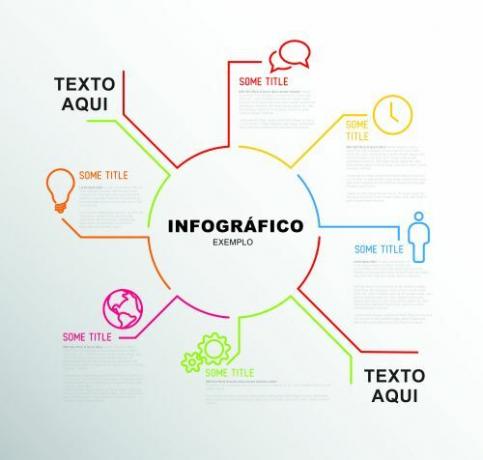Infographic is a tool that serves to transmit information through the use of images, drawings and other graphic visual elements. Normally, the infographic accompanies a text, working as a didactic and simple summary of the written content.
Infographics are useful in a wide range of sectors, from the academic world (work presentations scientific, for example) even in the professional environment (in journalistic texts, project presentations business and etc).
By joining text and images, the infographic works in two distinct areas of the human brain: the right side, responsible for understanding and interpreting figures; and the left side, which is focused on writing and logical reasoning. Thus, infographics end up simplifying the interpretation of content, as the two areas of the brain work together.
The advantage of the infographic is its ability to be visually personalized according to the type of target audience to be approached, theme, area of expertise, among others. In fact, being a visual tool, the graphic presentation of the infographic is very important for its correct interpretation.
A good infographic must be presented in an organized way, making it easier to understand the information contained in it by different levels of people, from technicians to lay people on the subject, by example.
Currently, there are several softwares that facilitate the creation of online infographics, intended for all types of users.
See also: meaning of Chart and visual communication.
Graphic representations as tools to explain ideas, concepts and processes have been used since prehistoric times. However, infographics as they are known today only began to be made in the beginning of the 16th century. Leonardo da Vinci, for example, used drawings and figures extensively to explain more simplified their studies and theories, on various subjects, but especially regarding anatomy human.
Examples of infographics
Complex infographic

simple infographic


